
Content analysis is a marketing task that’s never really complete.
You need to come back to your old content again and again to see what should be updated, which new visibility opportunities can be pursued and how to better optimize it for more conversions.
With that in mind, there’s no set list of tools you should be using again and again. New tools bring new analysis methods and, hence, new ideas. Here are 5 tools to use for content assessment:
1. Which Keywords Have I Missed?
Any time I am assessing my existing content performance, I start with identifying which keywords I have missed.
Content gap analysis answers one of the most important content marketing questions: which topics have I failed to cover, and which questions have I failed to answer when creating that content?
It’s usually a multi-step process where you need to:
- Identify competing URLs
- Run organic analysis of current positions
- Compare rankings with yours and identify which keywords your URL fails to rank in top 50
Serpstat is the SERP analysis platform that minimizes the whole process to only one step: simply enter your URL into their Missing Keywords tool, and it will generate a handy content analysis report including:
- Search queries competing pages generate traffic from while your URL fails to rank in top 50
- Search volume and “Competition Strength” for each query (“Competition Strength” is Serpstat’s own metric they calculate based on average authority of pages ranking in top 10 for the given query)
- Other URLs from your domain that rank for any of those queries (For you to avoid internal organic competition, i.e. keyword cannibalization (the term I am not a big fan of by the way). This latter report section is pretty awesome: I’ve never seen this done by anyone else and for established blogs (that tend to have a lot of content on similar topics) it’s a time saver!
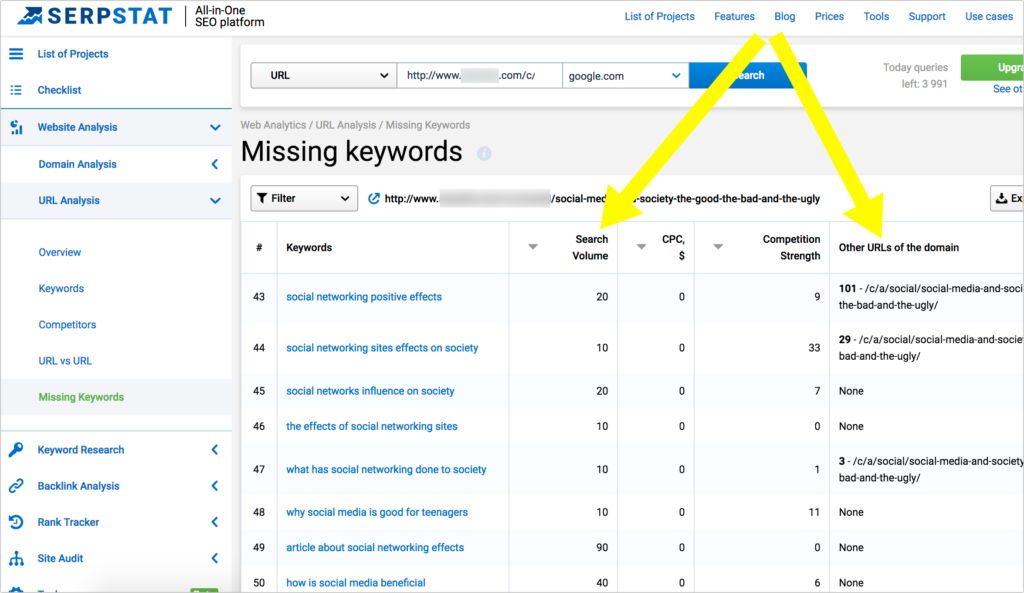 You can also filter the report by search volume, competition strength, any keyword in the query.
You can also filter the report by search volume, competition strength, any keyword in the query.
This is one of those reports that have too much going on: I always end up working on all “Other URLs”, as well to try and push them higher in SERPs.
2. Who Will Find My Page Content Satisfying?
Another fundamental question to answer is: is my page meeting the users’ expectations? In other words, have I done enough to optimize for search intent?
Not only is search intent playing a decisive role in engaging your visitors, but search intent optimization also is able to boost your rankings. That’s because Google has learned how to identify whether your page is meeting users’ needs when deciding how high it should rank.
Text Optimizer is a semantic analysis tool that identifies the type of audience your page caters to.
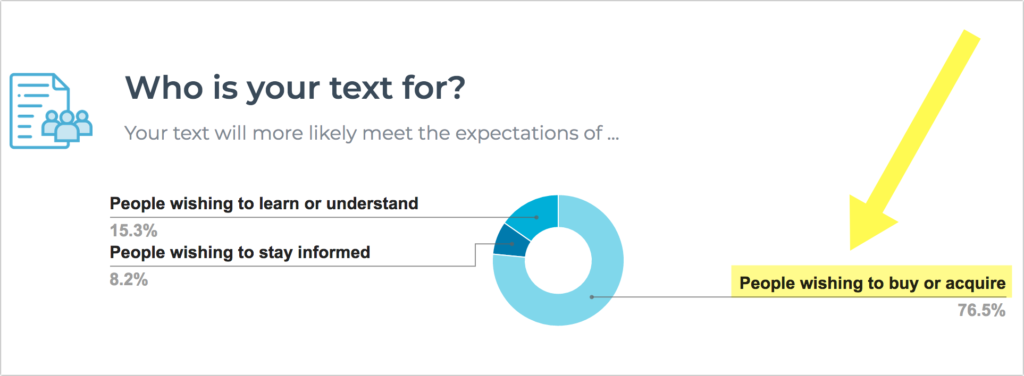
If you see that your text seems to be targeting the wrong type of audience, use Text Optimizer to better optimize your content for search intent for any given query.
Simply enter your query and provide your page URL: the tool will run Google search for your query and identify which related concepts should be covered in your content for it to better meet Google’s (and its users’) expectations. Include 20-25 of these concepts in your copy to better optimize it for search intent.
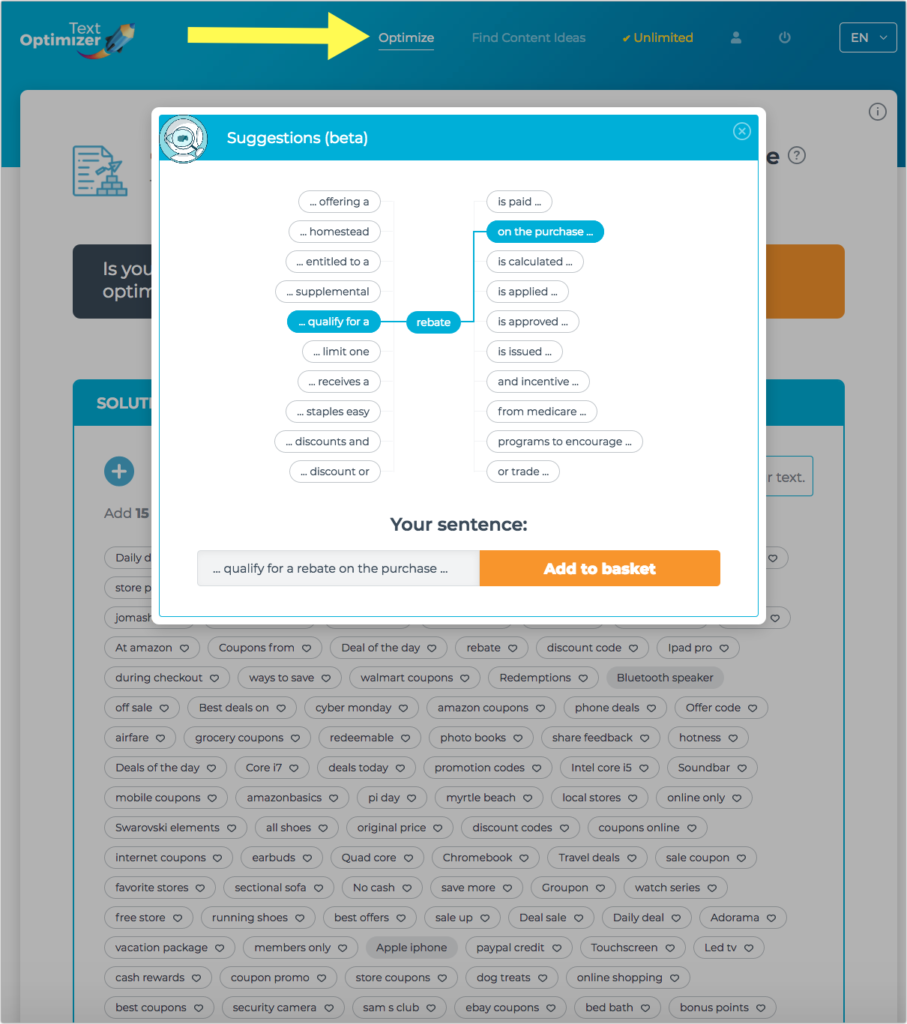
3. Does My Page Pass the 5-Second Test?
What’s the very first impression your page makes when users land on it? Is it instantly clear what the page is about? Are CTAs clearly visible on the page? Is the goal clear?
Studies have shown that most people need just a couple of seconds to decide whether they want to stay or leave a web page. In today’s fast-paced digital environment where most people browse the web on the go, from their mobile or smart assistant devices, this time frame is likely to become even shorter.
It takes most people about 5 seconds to decide whether they want to stay or leave a web page. #UX Click To Tweet
This makes your actual content quality almost secondary: most people won’t even see it unless they are instantly compelled to stay. This is where the 5-second test comes along: let strangers look at your page for five seconds, and then ask one simple question: “Was is this page about” or “What are you supposed to do on the page?”
If you recruit your own testers, this test is free to run. I usually use Usability Hub to quickly set up the tests. You can also recruit testers through the site which costs $30 (free for the first-time users).
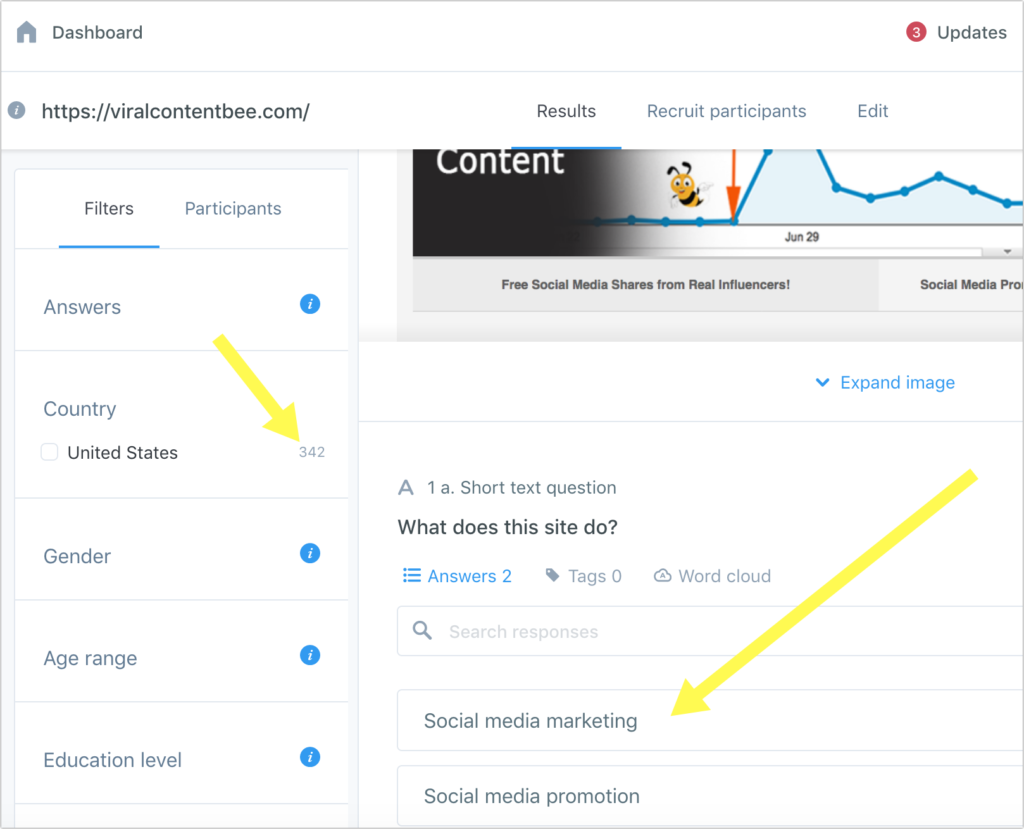
4. What Distracts Users from Following the Conversion Funnel?
Besides understanding the instant impression your users get when landing on your page, it is helpful to know what exactly distracts them. The easiest way to collect this data is through running a one-day heatmap test.
A heatmap is the visual representation of user behavior on the page, including scrolling, clicking, mouse movements, etc.
If you need to identify what gets your users’ attention, set up a move map that tracks cursor movements on your page. In most cases, it is safe to assume that people look where their cursor moves, so move maps can give you a good idea where people look when landing on your page.
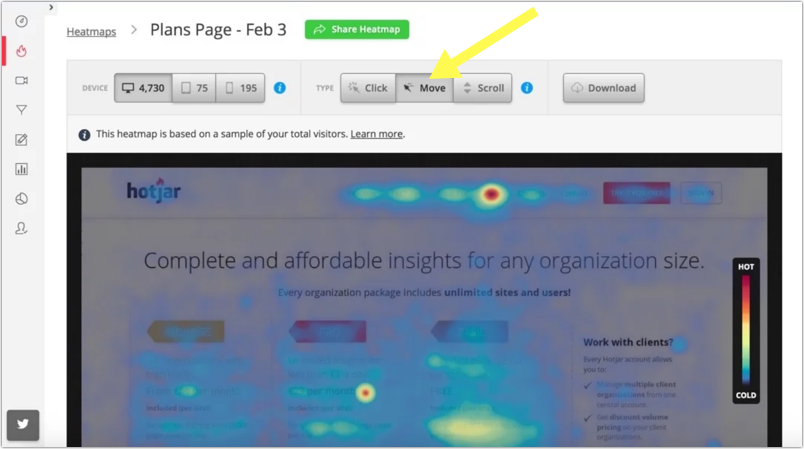
There are multiple platforms that you to run heatmap testing, as well as several WordPress plugins that integrate heatmaps into your A/B testing routine. In many cases, unless you have really heavy traffic, you can run simple move map testing for free.
5. What Is Interrupting Your Conversion Funnel Flow?
You probably have a few CTAs within your content, each leading your visitor down the conversion funnell, from clicking to opting-in to finally buying. Which of those steps is reducing your conversions?
Finteza is a free web analytics tool that allows you to monitor multiple events on a page and how they interact with one another.
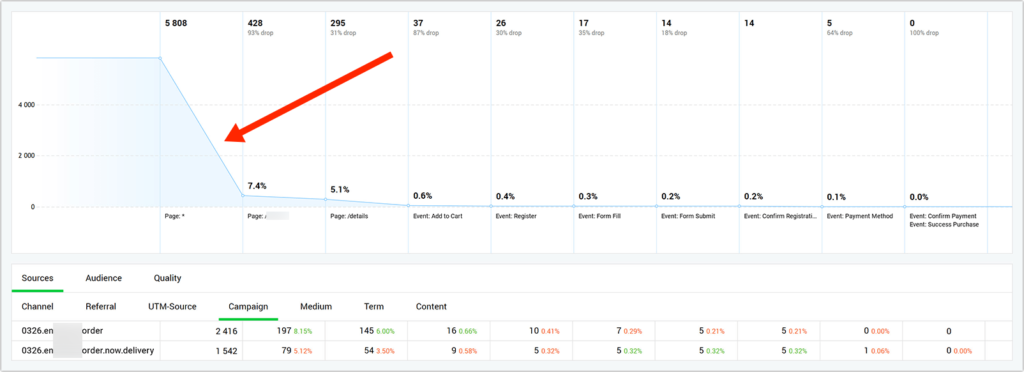
It’s pretty obvious that an extra click reduces conversions, so eliminating the extra step is likely to boost conversions.
Finteza is pretty easy to set up. Adding events for tracking is very straightforward too. If you are not technical enough, you can simply add a new link attribute data-fz-event=”Event+Name” (Put your event name instead of “Event+Name”), and the new event will be automatically populated and monitored.
Monitor all kinds of conversion-focused links on within your content including clicks to lead magnets,
Putting It All Together
There’s an overwhelming amount of both traffic acquisition and conversion optimization tactics. With so much testing and analyzing, how do you put everything together in a most actionable way? In other words, how do you move from analyzing onto implementing?
When working on old content, I treat it as a new marketing campaign. As soon as I come across an existing article or landing page that needs some work, I put it down as a new content project in my calendar inside ContentCal.
ContentCal is a collaboration editorial tool that is every content manager’s dream. I don’t have time for creating tickets or distributing tasks, so ContentCal is ideal. It takes two seconds to schedule a content campaign and put together a content brief, including all the numbers and test results I was able to collect.
My team will be notified of an approaching campaign through the shared calendar and will be able to quickly share the tasks and implement the suggestions.
Having a centralized dashboard that consolidates all my plans keeps me very organized and productive.
Hopefully these new tools will breathe fresh air into your content assessment process and inspire you to look for new tactics and trends to boost your content marketing performance.